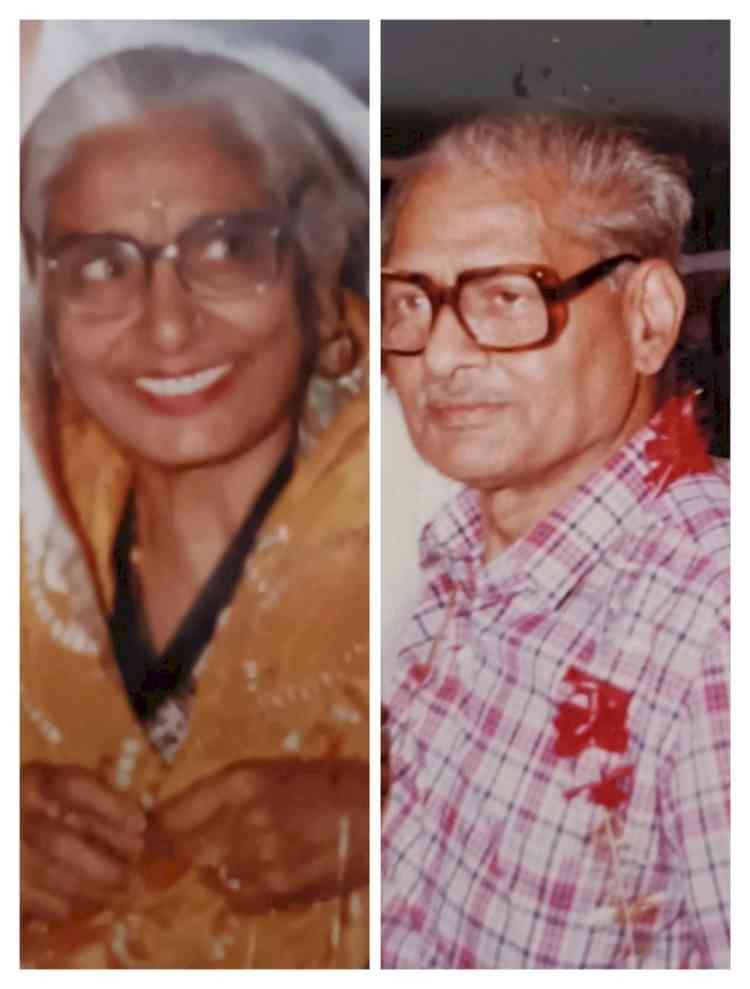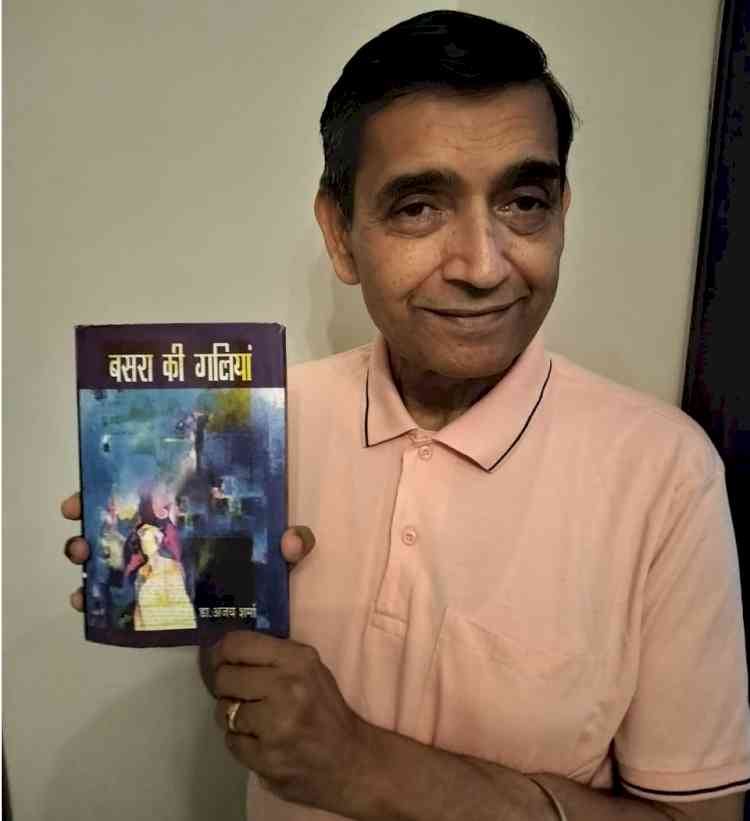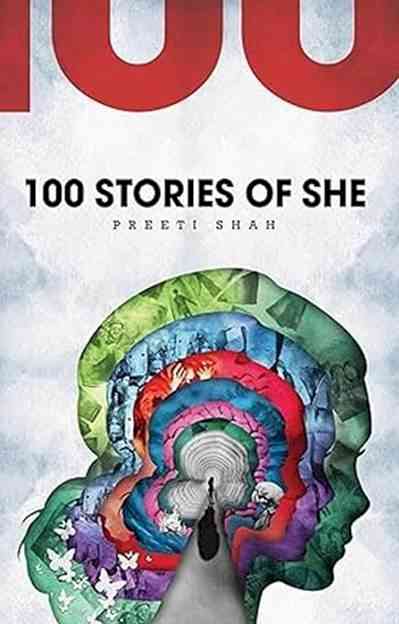An interview with Seema Jain by Dr Ajay Sharma about `Poetic World of Narendra Mohan’
Says the most dominant theme of Dr Narendra Mohan’s poems is the trauma of partition
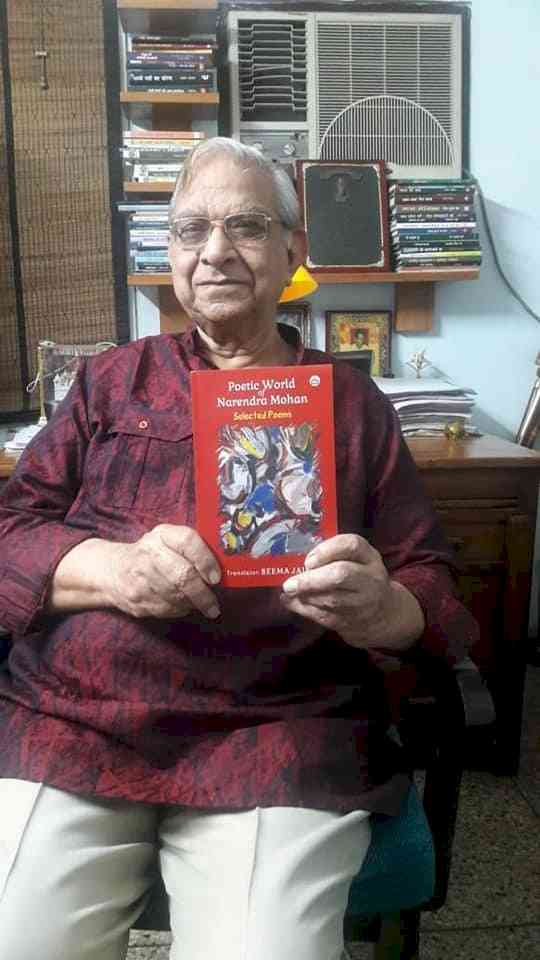
Poetic World of Narendra Mohan is a recently published English translation of the celebrated Hindi poet Dr Narendra Mohan’s 76 selected poems (including a long poem). The translation into English by Seema Jain enables a profound glimpse into the core sensibility of a mature poetic voice of Hindi literature.
The selected poems published as early as 1975 or as late as 2019 have been arranged here according to their dominant moods reflecting multiple experiences and challenges faced by the poet in his engagement with experiments, evoking certain recurrent moods, themes, images, motifs and complex emotional refrains.
The poems have been very ably translated by the translator, an Associate Professor of English and a bilingual poet herself, preserving not only the rhythm but also the essence and fragrance of a poem in translation. Close attention to the syntax, every single word, nuances of language, poetic structures and their connotations bring the translation very close to the original.
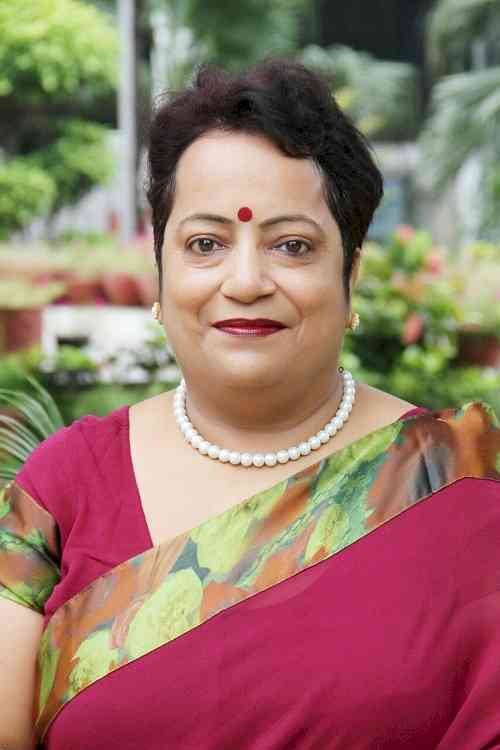
(Seema Jain)
Dr Ajay Sharma, the renowned novelist and litterateur, had a conversation with the Translator Seema Jain about the process of translating the book and about her experiences regarding the same:
Dr Ajay Sharma: Seema Ji, I know you have a good command over both the languages as you have been an Associate Professor & Head of the P G Department of English at KMV Jalandhar having a vast experience of teaching English Language and Literature for the last 38 years. Also you have been writing Poems and Short Stories in Hindi and English.
So what made you take to translation and why did you choose to translate Dr Narendra Mohan’s poems?
Seema Jain: Dear Ajay Sharma Ji it is a very good question you have asked me. Having fluency and command in both Hindi and English, translation always fascinated me. But as they say, certain things just come your way. In fact, the whole process of translating selected poems of the renowned Hindi poet Dr Narendra Mohan started taking shape when I met him at Ahmedabad about three years ago during the World Poetry Festival there. I was deeply impressed by the poem he recited (Kavita Mujhe Bacha Lo) as also by the aura of his personality as a mature, gifted and sensitive poet, having a beautiful and mesmerizing way with words, reciting poetry with unique poise and grace. I regarded it as one of the best poems recited there.
It was heartening for me when he complimented me for my poems I recited in both Hindi and English as also a translation of Dr Kirti Kesar's poem from Hindi to English, and asked me if I would be interested in translating his poems into English. Perhaps he felt that as a bilingual poet, I could do justice to the translation of his poems in terms of linguistic capability and in capturing the true spirit of his poetic sensibility. Then I translated his poem "Kavita Mujhe Bacha Lo" and a few other poems which he liked. Hence began this great odyssey!
Dr Ajay Sharma: What was your criterion of choosing Dr Narendra Mohan’s poems out of the huge bulk of his prolific poetry spanning over almost four decades and into multiple volumes?
Seema Jain: Once it was decided in principle to take up the translation, Dr Narendra Mohan gave me complete freedom to select the poems of my choice, whatever appealed to me.
I read a large no of his poems from various anthologies and though they were all beautiful master pieces in their own right and choosing some out of them was not an easy task yet I marked the ones that appealed to my taste and sensibility.
Dr Ajay Sharma: As we all know that translation of creative writing especially poetry is a challenging job, how would you describe your experience of translating the poems from Hindi to English? What were the difficulties encountered?
Seema Jain: Undoubtedly Dr Ajay, translation of poetry is most challenging and is almost like a trans-creation. First and foremost, it was by no means easy to capture the essence of his subtle, symbolic and richly metaphoric language, heavily relying upon Hindi idioms, poetic tropes etc. In fact some of the challenges were to find equivalents for many typical Hindi words, to capture the nuances of words with multiple shades of meaning, to choose the right ones closest to the intended meaning in the given context, and to deal with the cultural context and references in many poems. In fact, during the process, I used to have long telephonic conversations with him whenever I was stuck at some word or some references. In one of the poems, there were some lines quoted from Bhai Veer Singh and the words had a typical regional flavor.
‘Mughlan ne ghoda peediya ve/ gori paaniye nu jaa
Ghode te phad ke chaadh layi, ve koi pesh na jaa’
After some deliberation, we finally decided to use them as such in Roman script.
But for most of the other words or cultural references, effort was to try to find synonyms or near equivalents for the words or phrases, keeping in mind their meaning intended, metaphoric or otherwise.
Dr Ajay Sharma: Which aspects of Dr Narendra Mohan’s poetry appealed to you the most and why?
Seema Jain: The most dominant theme of Dr Narendra Mohan’s poems is the trauma of partition, the bloodshed, its horrifyingly brutal reality engulfing and destroying the tender, beautiful things of life-- art, music, dance, painting, birds, rivers, trees as also human relationships, friendships, trust etc. and the poet’s extreme sense of anguish over it find a poignant expression in many poems. The motifs of fire, blood, collapsing buildings, drying rivers, ghost cities, the psychic wounds, the choking wilderness, accompanied by an acute unbearable sense of loss and alienation--- all narrate the gory tale of the tragedy of partition and its long-lasting scars on the consciousness of a sensitive poet's mindscape and sensibility.
Some of the poems focus on the power games of politics, their inhumanity, depravity and the deplorable lot of common man with remarkable touches of satire and irony employed with great finesse. Some other poems embody the poet’s quest for his own inner self, the truths of life as also the creative and artistic processes, finding expression in varied art forms like theatre, painting, dance, puppet shows etc. All these moods correspond to the constituting metaphors of different sections in the book such as ‘Each Time I Die Around: Partition and Its Agony’ ‘A Window is Still Open: ‘Search for Identity’; ‘We Grieve: Political and Personal’, ‘Where is the Open Space?’ and ‘The Word, My Refuge: Aesthetic Experience’.
Dr Ajay Sharma: You have talked of the theme of partition in Dr Narendra Mohan’s poetry. He has had an affinity with Manto, another great writer focusing on this theme. How do you think it is reflected in his poetry?
Seema Jain: Dr Ajay, to my mind, Dr Narendra Mohan as well as Manto belong to that generation of writers who were eye-witnesses to the large scale violence, bloodshed, dispossession and loss of faith and trust that accompanied this holocaust and for any sensitive soul, it was impossible not to be deeply scarred by this ugly and gory chapter of our historic reality.
Dr Narendra Mohan refers to Manto in many of his poems on the tragedy of partition. In ‘Why Don’t you Come and See for Yourself? he addresses Manto and says:
Manto! the hustle and bustle in the streets of Delhi and Lahore
Has surely increased; so have terror and beastliness
Why don’t you come some day
And see for yourself the scene on both sides?
One Sugandhi * won’t be enough
Characters like Sara, Shagufta and Shagufta Rafiq
Are waiting for your attention Manto!
New laws are being made everyday
For the welfare of the public
The passion and daring like that of Mangu Kochwaan of Naya Kannon*
Is nowhere to be seen.
In the sand slipping through the fingers
Is there no shiny particle left Manto?
In ‘Dark Margins Spreading’ he makes a reference to the Partition Paintings by Satish Gujral.
But besides the theme of partition, his poems also focus on injustice anywhere whether it is the sufferings of the people of Iraq or of 1984 riot victims or killing of intellectuals in many poems like “I Don’t Know Muntazer Al-Zaidi,” “Each Time I Die Around,” “After Many Days” etc.
Dr Ajay Sharma: What is the next project you plan to undertake?
Seema Jain: Right now, I am working on a collection of my English Poems. After that, I might undertake some more translation projects, alongside my own creative writing, as I find translation also quite engaging and enriching an experience.
Dr Ajay Sharma: Thanks Seema ji for sharing your thoughts and experiences in such a spontaneous and straight-forward manner. It was a pleasure interacting with you and best wishes for your creative journey ahead.
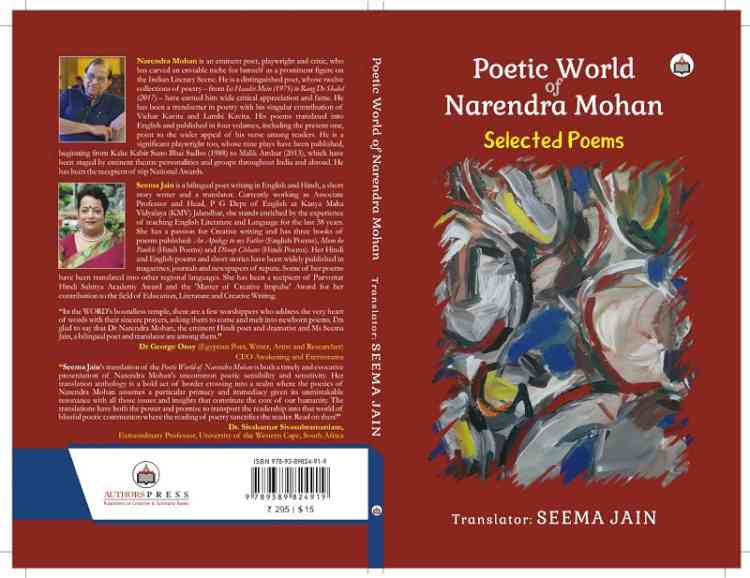


 cityairnews
cityairnews 
